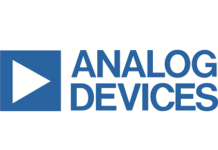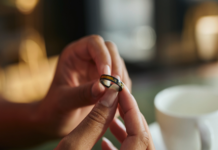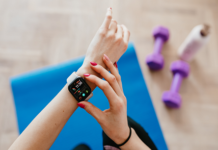
The wearable technology market has experienced a spectacular upsurge in recent years, igniting a revolution in how we interact with our gadgets and propelling substantial breakthroughs in a number of industries. The limitations of conventional electronics have been transcended by wearable technology, which has evolved into stylish and useful accessories that meld into our daily lives.
Expanding Adoption and Integration: –
One of the most significant trends in the wearable technology market is the increasing adoption and integration of wearables into various industries and domains. Initially popularized in the fitness and healthcare sectors, wearables are now penetrating diverse fields, including entertainment, fashion, sports, and even industrial applications. The ability to collect and analyze data in real-time has empowered businesses and individuals to make informed decisions, leading to improved performance, enhanced safety measures, and personalized experiences.
Keeping tab with a recent report published by AMR, the global wearable technology market is anticipated to set forth a noteworthy CAGR from 2022 to 2031.
Health and Wellness Revolution:
The health and wellness segment continues to be a driving force behind the wearable technology market. Fitness trackers and smartwatches have evolved to offer advanced health monitoring capabilities, including heart rate monitoring, sleep tracking, stress management, and even ECG readings. Additionally, wearables have become essential tools for telemedicine and remote patient monitoring, allowing healthcare professionals to monitor patients’ vital signs and offer personalized care from a distance. The integration of wearables with artificial intelligence (AI) and machine learning (ML) algorithms further enhances their capabilities, providing valuable insights into users’ health patterns and potential health risks.
Incorporation of Augmented Reality (AR) and Virtual Reality (VR):
The convergence of wearable technology with augmented reality (AR) and virtual reality (VR) has opened up new realms of possibilities. AR glasses and smart helmets are transforming industries such as manufacturing, logistics, and maintenance by overlaying real-time information, instructions, and visual aids onto the user’s field of view. Similarly, VR headsets are revolutionizing gaming, training, and immersive experiences by providing realistic simulations and interactive environments. As the technology improves and becomes more affordable, we can expect widespread adoption and increased innovation in this space.
Simultaneously, the rise of AR in gaming has attracted significant attention from industry leaders, notably Nintendo and Microsoft, who have embraced its potential. These major console producers are spearheading the AR movement, acknowledging that it enables players to transcend their virtual worlds and engage with the actual environment. AR gaming experiences, such as Human Pac-Man, exemplify this concept, allowing participants to don goggles and immerse themselves in real-life gameplay, assuming the appearance of iconic Pac-Man characters. Many players argue that AR gaming necessitates more than simply wielding a mobile device, with console devices serving as valuable complements in bridging this gap.
According to a survey conducted by Ericsson Consumer Lab, an overwhelming majority of 7,000 participants between the ages of 15 and 69 from Brazil, China, France, Japan, South Korea, the UK, and the US expressed keen interest in immersive augmented reality (AR) gaming. The survey revealed that approximately two-thirds of the respondents displayed a strong fascination with AR gaming experiences. Interestingly, nearly 32% of these users also expressed their belief that incorporating AR technology into physical activity and exercise would significantly enhance the appeal and excitement of AR games. This indicates a noteworthy demand for interactive and physically engaging AR gaming among the surveyed population.
Fashion-forward Wearables:
Gone are the days when wearables were considered bulky and unfashionable. Companies are now focusing on creating wearables that seamlessly integrate with our daily attire. Smart jewelry, smart clothing, and even smart tattoos are gaining popularity, offering both functionality and style. These fashion-forward wearables not only track health and fitness data but also enable communication, contactless payments, and customization, blending technology seamlessly into our everyday lives.
Apple’s entry into the wearables market is expected to bring about significant competition for existing players. With the upcoming Apple Watch 8, the company is aiming to introduce several innovative features that differentiate it from competitors like Fitbit Sense. One notable capability of the Apple Watch 8 is its ability to detect skin temperature, a feature not currently available in the Fitbit Sense. Additionally, Apple is expanding the health functions of its wearable lineup by incorporating features such as menstrual cycle tracking, fall detection with the ability to ask for help, monitoring of low and high heart rates, and diagnosing irregular heart rhythms through a 30-second test. These cutting-edge capabilities are driving the global expansion of the wearables industry, setting the stage for an exciting and competitive market landscape.
Smartwatches have witnessed a surge in popularity, captivating not just the younger generation but also older individuals. This widespread adoption can be attributed to the remarkable inclusion of health-monitoring features by prominent wearable manufacturers such as Apple and Fitbit. These innovative features cater to the specific health needs of older people and provide real-time updates on their well-being. For instance, the Apple Watch Series 4 introduced a fall detection app and an EKG monitor, while Fitbit integrated a sleep apnea detection feature. Looking ahead, the forthcoming generation of Apple watches is anticipated to incorporate glucose monitoring capabilities, particularly beneficial for individuals with diabetes. Moreover, Apple collaborated with L’Oreal to create a groundbreaking skin sensor capable of detecting UVA and UVB exposure, further enhancing the health monitoring capabilities of smartwatches.
Meanwhile, Amazon made its foray into the wearables market, creating anticipation for new competitors to emerge in the years ahead. Amazon’s hardware division, Lab126, introduced Amazon earphones that boasted gesture controls for tasks like answering calls and changing music tracks. However, as smart wearables continue to advance technologically, complexities and data security concerns are likely to present barriers to industry expansion. Nonetheless, ongoing research in the field of smart wearables holds the potential to overcome these challenges in the near future.
Acquisitions:
The wearable technology market has witnessed several notable acquisitions and consolidations lately. Established tech giants and innovative startups have been acquiring smaller companies to enhance their product offerings and expand their market reach. These acquisitions aim to leverage the expertise and technologies of different players to create more comprehensive wearable solutions. Such collaborations often lead to breakthrough innovations and the development of novel use cases, further propelling the growth of the market.
Concluding lines:
To wind up, it can be stated that the wearable technology market continues to evolve at a rapid pace, driven by technological advancements, expanding use cases, and growing consumer demand. From fitness tracking to healthcare monitoring, AR/VR integration, fashion-forward wearables, and industry collaborations, wearables are reshaping how we live, work, and play. As we move forward, it will be fascinating to witness the next wave of innovation in this space, as wearables become even more sophisticated, seamless, and integral to our daily lives.
Source of article: – https://www.alliedmarketresearch.com/wearable-technology-market


















